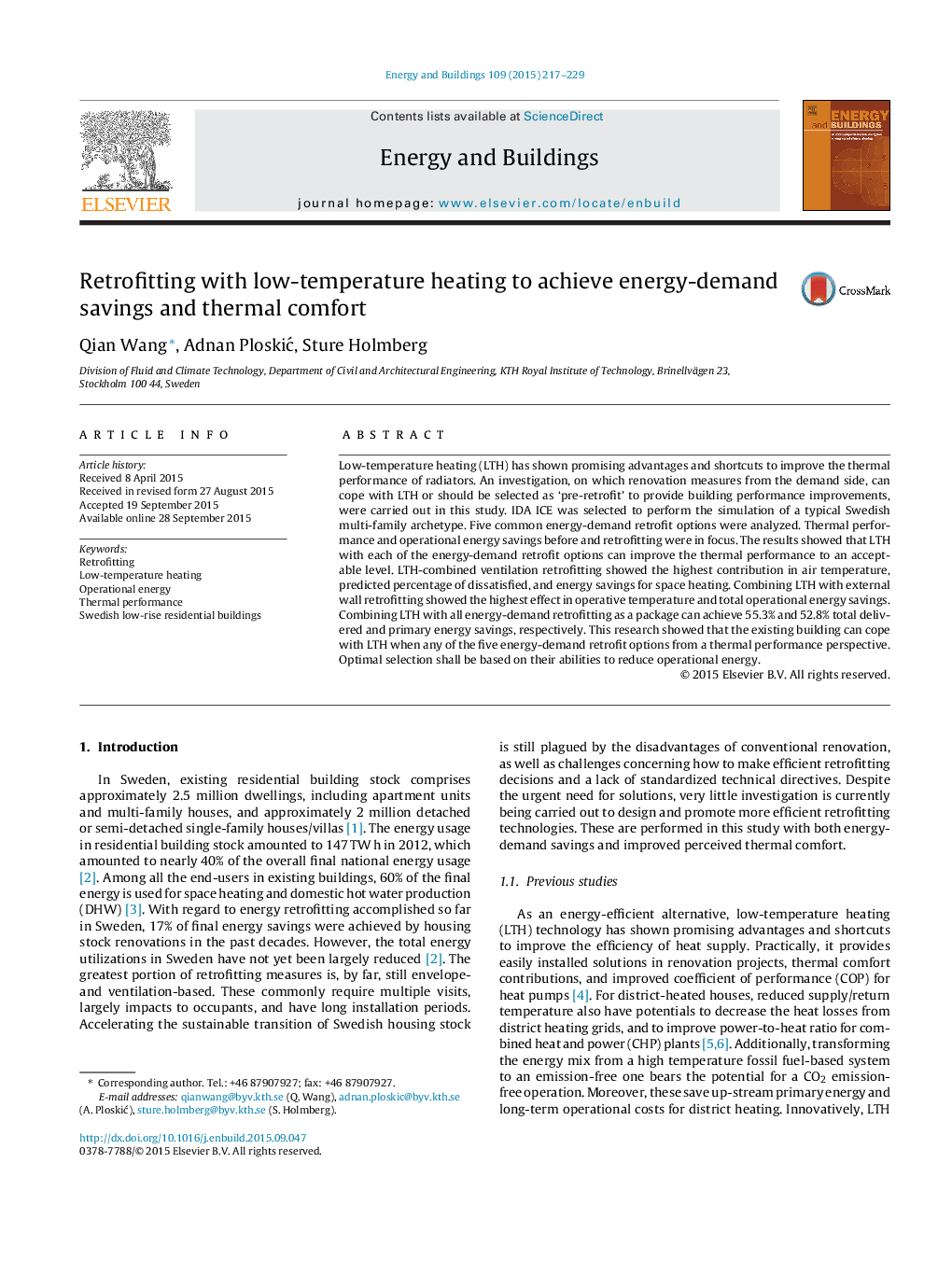| Article ID | Journal | Published Year | Pages | File Type |
|---|---|---|---|---|
| 6730977 | Energy and Buildings | 2015 | 13 Pages |
Abstract
Low-temperature heating (LTH) has shown promising advantages and shortcuts to improve the thermal performance of radiators. An investigation, on which renovation measures from the demand side, can cope with LTH or should be selected as 'pre-retrofit' to provide building performance improvements, were carried out in this study. IDA ICE was selected to perform the simulation of a typical Swedish multi-family archetype. Five common energy-demand retrofit options were analyzed. Thermal performance and operational energy savings before and retrofitting were in focus. The results showed that LTH with each of the energy-demand retrofit options can improve the thermal performance to an acceptable level. LTH-combined ventilation retrofitting showed the highest contribution in air temperature, predicted percentage of dissatisfied, and energy savings for space heating. Combining LTH with external wall retrofitting showed the highest effect in operative temperature and total operational energy savings. Combining LTH with all energy-demand retrofitting as a package can achieve 55.3% and 52.8% total delivered and primary energy savings, respectively. This research showed that the existing building can cope with LTH when any of the five energy-demand retrofit options from a thermal performance perspective. Optimal selection shall be based on their abilities to reduce operational energy.
Related Topics
Physical Sciences and Engineering
Energy
Renewable Energy, Sustainability and the Environment
Authors
Qian Wang, Adnan PloskiÄ, Sture Holmberg,
